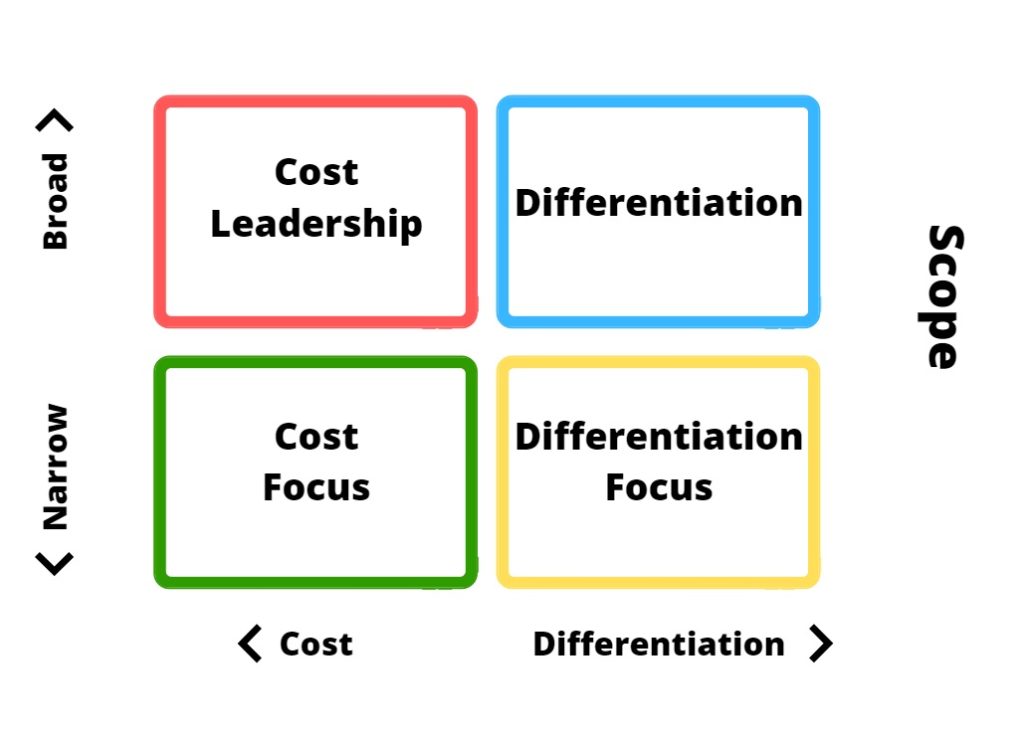The organizations are operating with the intension of achieving a defined goal. To achieve this goal, driving the organizational activities towards the success is majorly important. To identify the growth opportunities Michael Porter‘s generic strategies can be used in any type of organization.
In 1985, through his book “Competitive Advantage” Creating a Sustaining Superior Performance’, Michael Porter’s Generic Strategies were introduced for the first time.
It is vital for any organization to evaluate their current business, identify and decide the products they are going to consider producing in future to achieve maximum profit. This may include discontinuing products, introducing new products or modifying existing products. This is a necessary for any organization to achieve their targets efficiently and effectively, maintain the expected status by the stakeholders and attract the best possible market share for the product or service.
While maintaining all these, the organization’s portfolio also must grow and strategies should be implemented using the available strengths and opportunities. Michael Porter’s Generic strategies is a tool that can be used for identifying the direction of the organization.
In the Michael Porter’s Generic strategies, three main strategies are used as the base namely, Cost leadership, Differentiation leadership and Focus. Later he divided the focus strategy in t two sub categories namely Cost focus and Differentiation Focus.
According to Michael Porter, there are four generic strategies.
- Cost Leadership
- Differentiation
- Cost Focus
- Differentiation Focus

Cost Leadership
Under the Cost leadership strategy, the organization target for a broad, large scale market. They provide the lowest possible prices to attract customers. The intension of this strategy is to reduce the costs as much as possible. The organization can use two methods to become success using cost leadership strategy. They can reduce the cost of the product as low as possible or they can achieve a large market and keep the prices in average level. Both options will help the organization to reduce the cost and to increase the income.
To implement one of these methods, the organization should have a substantial capital with them and there should be a possibility in reducing the material, labour and production costs. This can be achievable in the process up to a certain extend only. The organization should be thoroughly aware when to stop the cost reduction process.
Differentiation
Under the Differentiation strategy, the organization is targeting a broad, large range of market but provide a product with unique features. The organization has to create the product in a very unique way in which the product can achieve competitive advantage in the industry. They should concentrate on attracting the customers through the unique features of the product and to increase the market share by that. This helps the organization to face the rivalry competition successfully in maximizing the profits. However, the organizations who are using the differentiation strategy in Michael Porter’s generic strategies, have to invest a lot on the Research and development, innovation and creativity techniques.
Apart from that, the right way of marketing is vital for this kind of products as they are targeting a large scale of market. They should continuously improve the product qualities and should be flexible to the environmental changes.
Cost Focus
When the organization is implementing the cost focus strategy, they are aiming a niche market with a little competition. This is more a focused market segment and the product will be provided to the market with the lowest possible price. It is importance for the organization to choose the niche market correctly and provide to the market. That will create repeat customers and the products cost will remain low.
Differentiation Focus
When an organization is providing its product to the market using the differentiation focus, they select a niche market and provide a unique product to that market. This involves a powerful brand loyalty of the customers to the product. It is highly important to make sure the product features remain unique as the customer loyalty is based on the uniqueness of the product.

